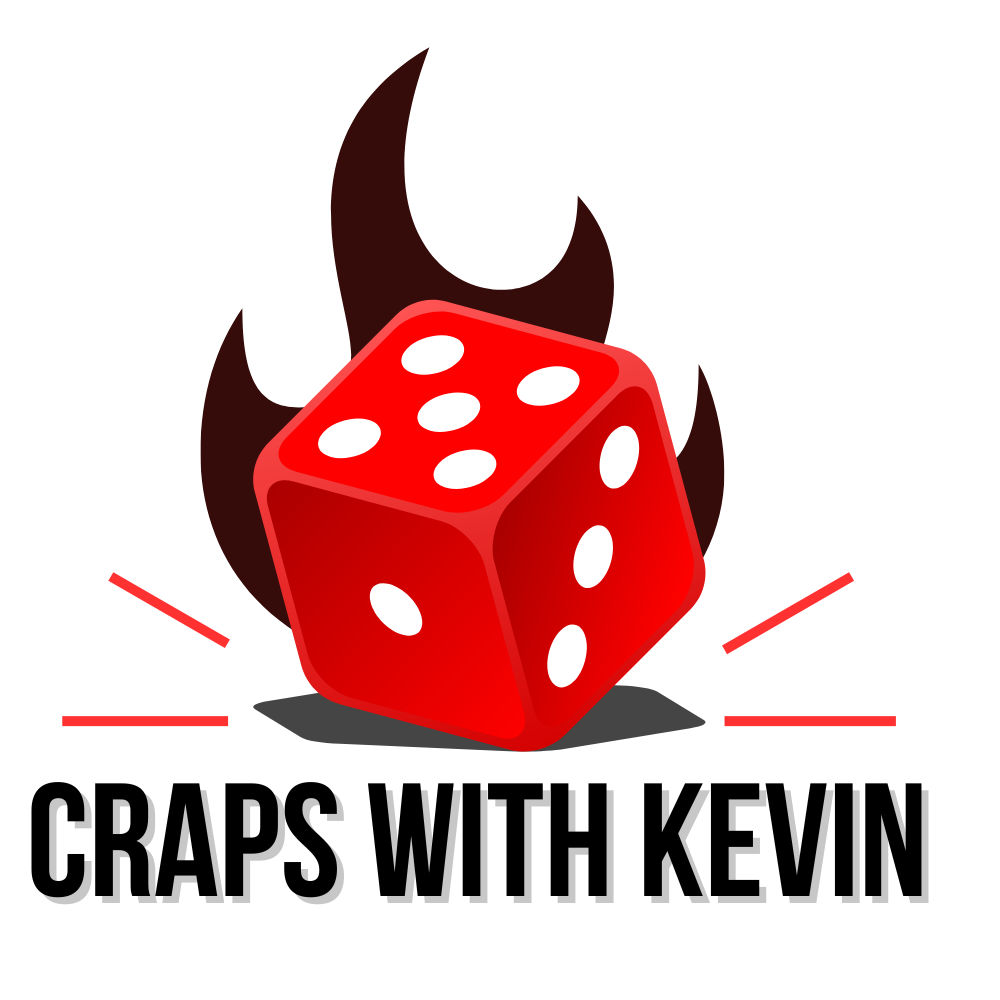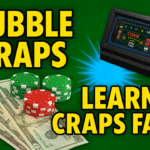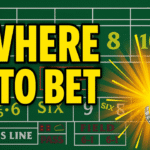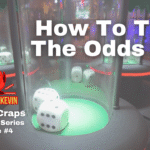New to Craps? You’re in the right place.
This glossary breaks down some key terms you’ll hear at the craps table—without the casino jargon. Whether you’re playing live or on bubble craps, these definitions will help you understand the game and play with confidence.
Tap any term below to learn what it means…
Essential Terms
The most basic and popular bet in craps. You win on a come-out roll of 7 or 11, lose on 2, 3, or 12. If any other number rolls (4, 5, 6, 8, 9, or 10), that number becomes the point—and you win if it’s rolled again before a 7.
The first roll of a new betting round. It sets the stage for the Pass Line. A 7 or 11 wins, while a 2, 3, or 12 loses. Any other number becomes the point.
If the come-out roll lands on 4, 5, 6, 8, 9, or 10, that number becomes the point. The shooter must roll it again before rolling a 7 in order for Pass Line bets to win.
An extra bet placed behind your Pass Line bet once a point is set. It pays out true odds and has zero house edge, making it the best bet in the casino.
A bet that a specific number (4, 5, 6, 8, 9, or 10) will roll before a 7. Unlike the Pass Line, it can be turned on or off at any time and pays slightly less than true odds.
A bet on a specific number (typically 4 or 10) to hit before a 7. You pay a small commission (usually 5%) but get better odds than with a Place Bet.
A bet that a number (4, 6, 8, or 10) will roll as a double (e.g., 2+2 = Hard 4) before a 7 or before that number is rolled the easy way. Riskier but pays more.
When a shooter rolls a 7 after the point has been established, ending the round. All Pass Line, Come, and most Place Bets lose.
The numbers 2, 3, and 12. These are losing numbers for Pass Line bets on the come-out roll. They’re also the namesake of the game.
A come-out roll of 7 or 11. It’s an instant win for Pass Line bets and a great way to start the game.
Simple bets that 6 or 8 will roll before a 7. Pays even money but is generally avoided because Place Bets on 6 or 8 pay better.
A one-roll bet that wins if the next number is 2, 3, 4, 9, 10, 11, or 12. Usually pays 2-to-1 on 2 and 12, and even money on the rest.
Additional Terms
The person currently rolling the dice. Every player at the table has a chance to be the shooter. The game revolves around the shooter establishing a point and trying to hit it before rolling a 7.
The dealer who stands in the center of the table holding a long stick (called a “crap stick”). They move the dice to the shooter, call out the results, and control the pace of the game.
The supervisor seated behind the table, usually in the center. They oversee the game, manage chips, resolve disputes, and keep an eye on dealers and bets.
There are two dealers at each craps table—one on each side of the boxman. They handle bets, payouts, and chip movement on their half of the table. Always be polite—they’re working hard!
A round disc that shows whether the game is in a “come-out” roll or “point” phase. “OFF” means a new round is starting; “ON” shows the active point number. The puck is managed by the dealers.
A term that means your bet is active. For example, most bets are “off” during the come-out roll unless you say, “my bets are working.”
These are bets that are temporarily inactive—usually during the come-out roll. Players may ask to have their Place or Buy bets turned off during this time.
When a player trades in smaller denomination chips for higher-value ones, usually before leaving the table. Say “I’d like to color up” and the dealer will help.
A phrase used by dealers when Pass Line bets win. It’s part of the rhythm of the table and signals that chips are about to be distributed.
Said by players (sometimes superstitiously) when the dice fly off the table. If the shooter wants the same pair returned (and the casino allows it), they’ll say, “Same dice, please.”





